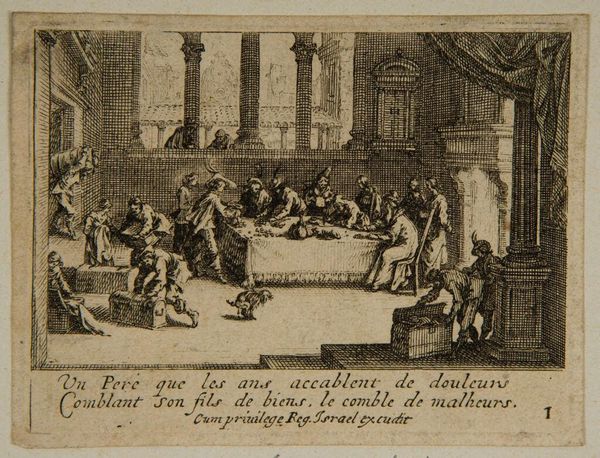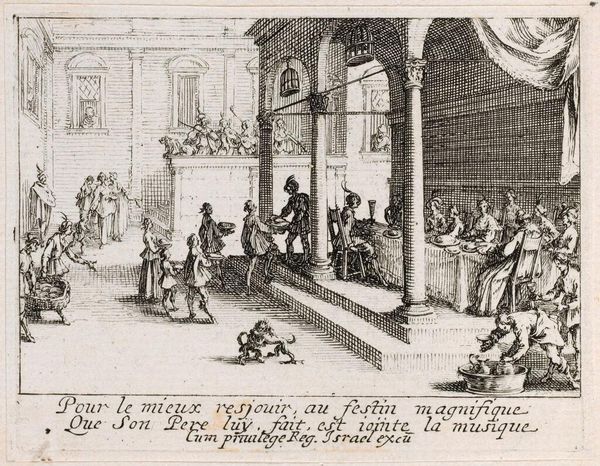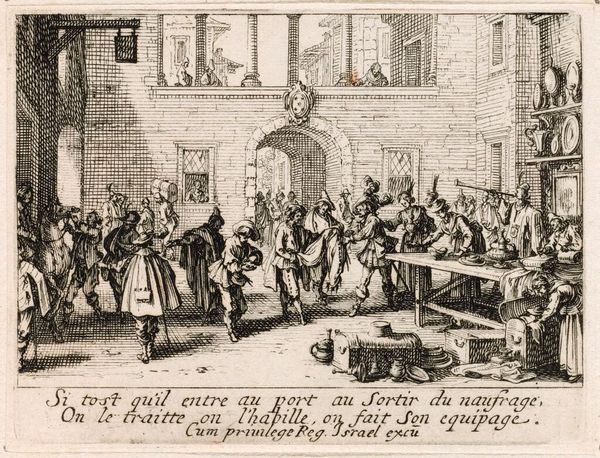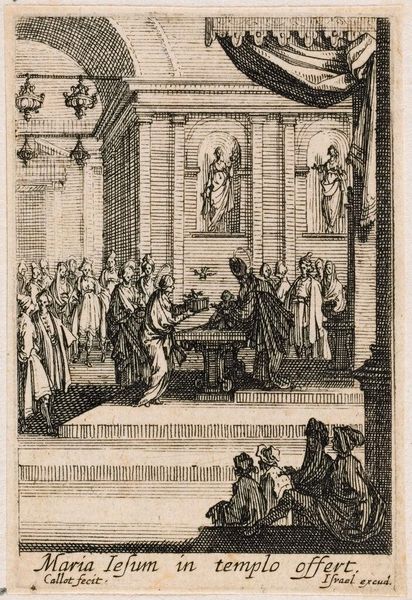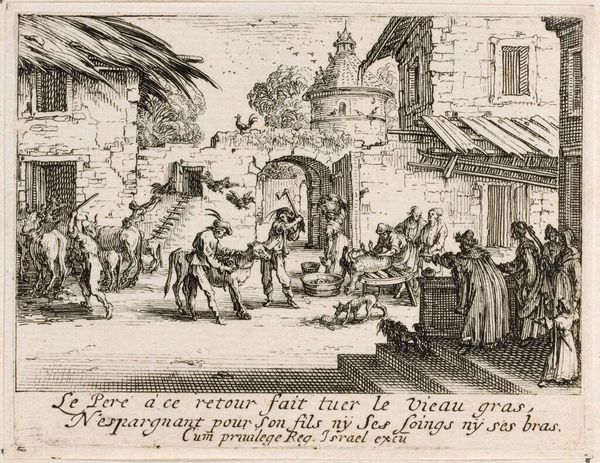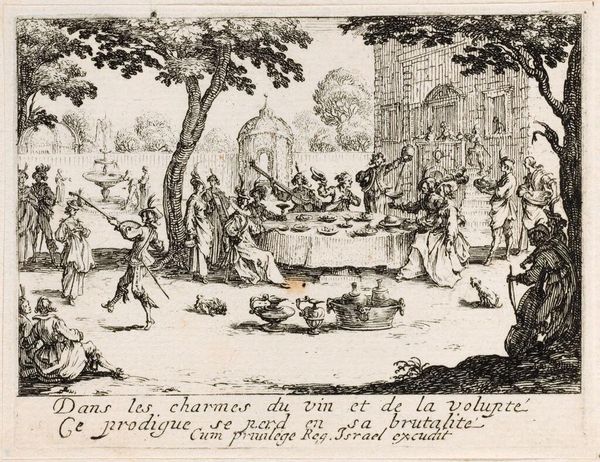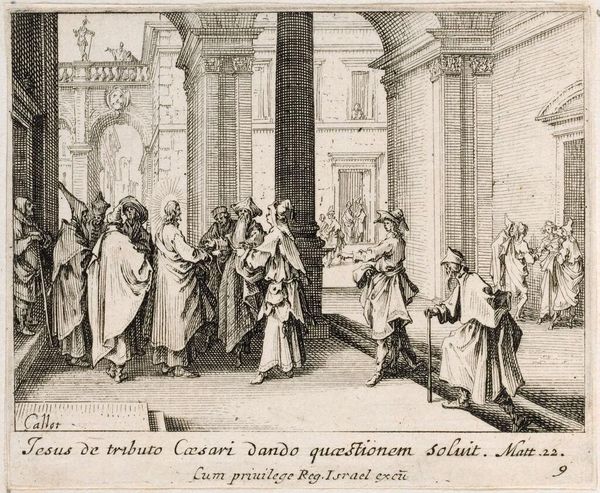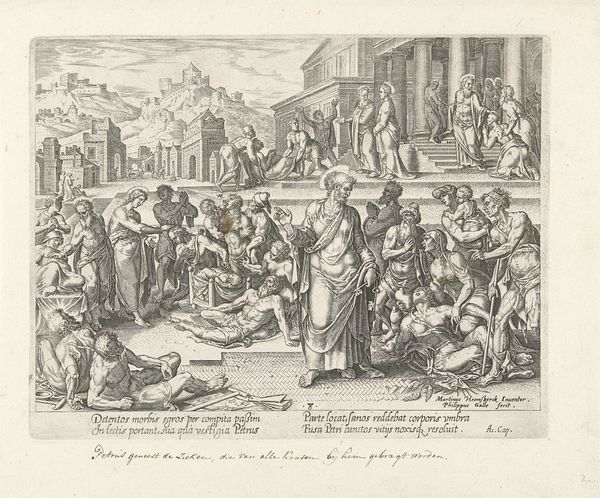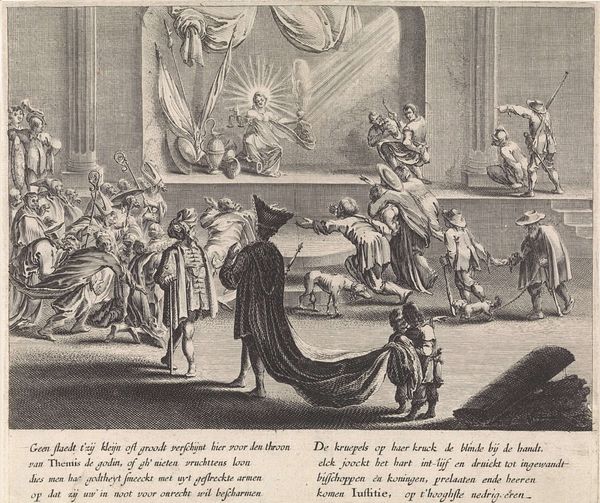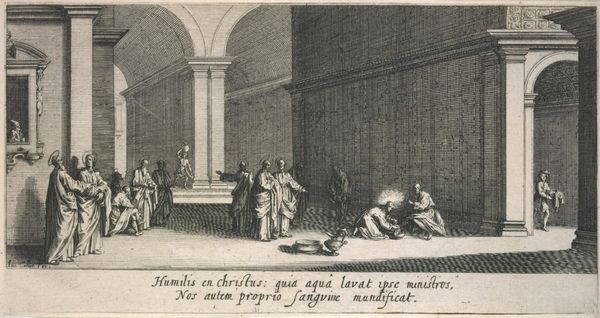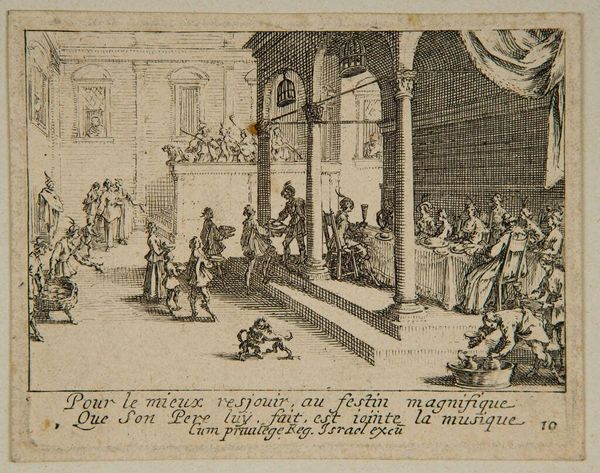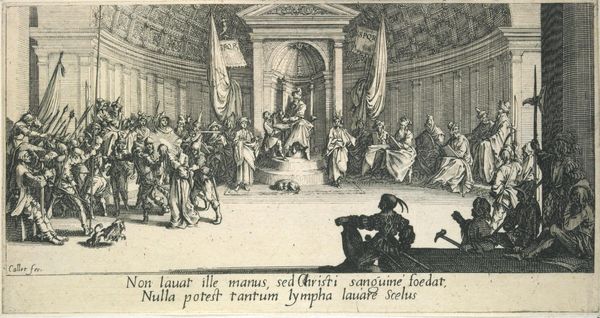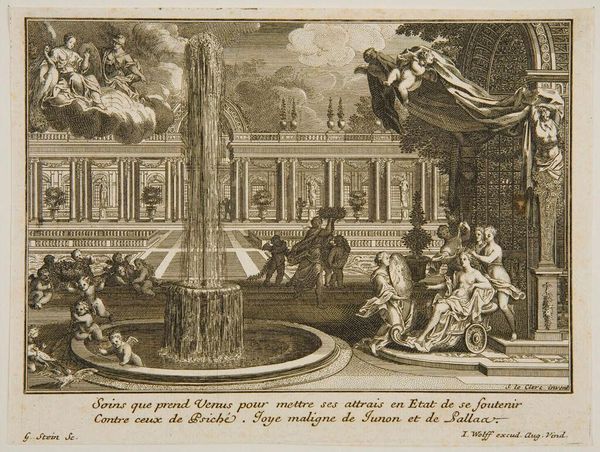
Dimensions: 6.5 x 8.4 cm (2 9/16 x 3 5/16 in.)
Copyright: CC0 1.0
Curator: Jacques Callot's small etching, "Prodigal Son Receives His Inheritance," presents a dense narrative scene. The distribution of wealth feels almost theatrical. Editor: It does. The material reality of the scene is striking. The artist emphasizes the coins, chests, and textiles, underscoring the literal transfer of resources. You can almost hear the clinking of coins. Curator: Indeed. It's potent how Callot uses the biblical story to speak to larger societal concerns about inheritance and its potentially corrupting influence. Consider the father’s hidden face, a symbol of the obscured wisdom that's being ignored. Editor: The labor involved in acquiring and transferring that wealth is also present; those figures hauling chests aren't just props. Callot highlights the tangible effort behind creating material abundance. Curator: The symbols embedded within this piece act as a caution. The dog at the center, for instance, is never a good omen. Editor: I agree; the abundance feels tainted. It's fascinating to consider the etching process itself—how Callot, through labor-intensive lines, crafted this visual commentary on wealth and its consequences. Curator: I'm struck by how the symbols are reinforced by the broader narrative. Editor: The piece really makes you think about the cost, material and otherwise, embedded in every transaction.
Comments
No comments
Be the first to comment and join the conversation on the ultimate creative platform.
